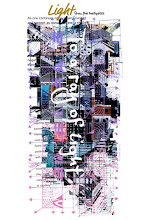Around 250 to 600, front and rear burial mounds began to appear in Japan. There are more than 4,800 units nationwide. The Nintoku Emperor's Tomb in Osaka Prefecture is the largest in Japan with a total length of about 486m.
If you look closely at this burial mound, you can see that the trapezoidal part has an arm-like structure. The same shape as this is the common symbol Tanit. In addition, it is a symbol seen in the frame of Tanit that the front and rear burial mounds are gradually rising.
The burial mound of Igenoyama in Kyoto Prefecture can also be seen.
You can also see the construction of the Mitsujo Tumulus in Hiroshima Prefecture on the left. There are cases where there is no construction like the Hashihaka Kofun in Nara Prefecture on the right, or there are times when there is only one.
There are more than 200 square front and rear burial mounds in Japan. The Oyasuba No. 1 burial mound in Fukushima Prefecture has a total length of about 83 m.
The Kocho Shizuka tumulus, which is a front and rear tumulus in Shizuoka Prefecture, has a total length of 46 m and is lined up with the front and rear tumuli.
The shape of this anterior-posterior burial mound can also be seen in Tanit, where the sun and crescent moon are located. The front and rear burial mounds are also gradual. In other words, a symbol that represents Emptiness.
Inside the front and rear burial mounds, there is a megalithic stone chamber. This stone chamber has a megalith as a ceiling stone like a dolmen.
The burial mound was also made during the Kofun period.
Circles and double circles were also common symbols and were found in Egyptian ornaments.
At the same time, octagonal octagonal burial mounds were also made.
An octagonal symbol was also found in the shape of a star in the upper left corner of a Babylonian stone around 1120 BC.
Hexagonal burial mounds are also made, although the number is small.
The poses of goddesses from all over the world holding snakes with both hands can be seen in the next Indian excavation. Hexagrams and elephants are engraved above and below it, and hexagons and hexagrams are also common symbols.
There are also scallop-style tumuli, soenfun, both-middle-circle tumuli, and both-middle tumuli. These are also made from the combinations of symbols we have seen so far.





































0 コメント